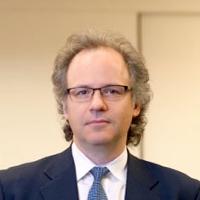
[Editor's Note: This is the latest in The Tyee's latest New Ideas for the New Year, our popular annual series highlighting creative ideas for improving our lives and communities. We're publishing one every day from Dec. 20 through Dec. 31.]
Canadian universities and colleges have undergone a remarkable technological transformation over the past decade. Ten years ago, laptops were relatively rare in classrooms, yet today virtually every student comes to buildings outfitted with electric outlets and Internet connectivity. Course websites were once little more than places to post a syllabus and a list of readings, but today they feature podcasts, webcasts, the actual course readings, and space for ongoing discussion and debate.
While technology has become a core part of the educational process, it has often been treated as a complement -- rather than a replacement -- for traditional educational materials. Libraries still spend hundreds of millions of dollars on physical books and journals, some professors still generate paper-based course-packs, and the schools themselves still pay millions of dollars in copying licensing fees.
The two-track approach may have made initial sense, but the costs of maintaining both are increasingly forcing universities to consider whether technology can replace conventional approaches. The tipping point toward using technology as a replacement may have come this year when Access Copyright, the copyright collective that licenses copying on Canadian campuses, demanded a significant increase in the fees associated with photocopying articles and producing printed course-packs.
The increased demands -- which would cost students millions more in fees -- has forced universities and colleges to examine whether these copyright licensing costs are still appropriate in light of alternative means of accessing and delivering educational materials. The answer from a growing number of schools is that they are prepared to chart a new path that relies more heavily on emerging technologies and electronic access.
Universities point to the development of the Canadian Knowledge Research Network, which provides electronic access to tens of thousands of books and journals from over 5,000 publishers worldwide. Together with funding from the federal and provincial governments, 74 Canadian universities have paid millions for licences to access the database content. That content can now be used to develop electronic course-packs and provide campus wide access without the need to pay an additional licence fee.
Open access to the future
Similarly, the emergence of open access, where researchers make their works openly available online, provides a second major source of materials for teaching and research. Thousands of journals make their content freely available, creating a treasure trove of materials that can be incorporated into classrooms without the need for further licences.
As a result of these developments, universities have announced initiatives to base their future instruction around alternatively licensed electronic materials. For example, the University of British Columbia is creating a database that tracks the licencing status of journals and articles for professors and students. Athabasca University, Canada's leading distance-learning university, has announced that it plans to aggressively promote the development of open educational resources that can be freely used by faculty and students around the world. Other schools have indicated that they will pursue individual licences with rights holders where specific materials are needed that are not otherwise available.
The net effect will result in trading some short term pain for considerable long term gain. Professors and students will experience some immediate challenges as the use of traditional course packs disappears alongside the expiry of the copyright licences. Yet the longer term benefits are enormous since publishers and authors will continue to be compensated through mechanisms such as CKRN and Canadian higher education will be able to leverage their massive investments in technology to provide students with better, more engaging and interactive learning experiences.
[Editor's Note: As per Tyee tradition in recent years, we've closed our comment section for the holidays. Thank you all for creating such a thoughtful, alive and insightful conversation this year. We look forward to more of the same in the next. To you and yours, a heartfelt happy holidays!] ![]()
Read more: Education
















